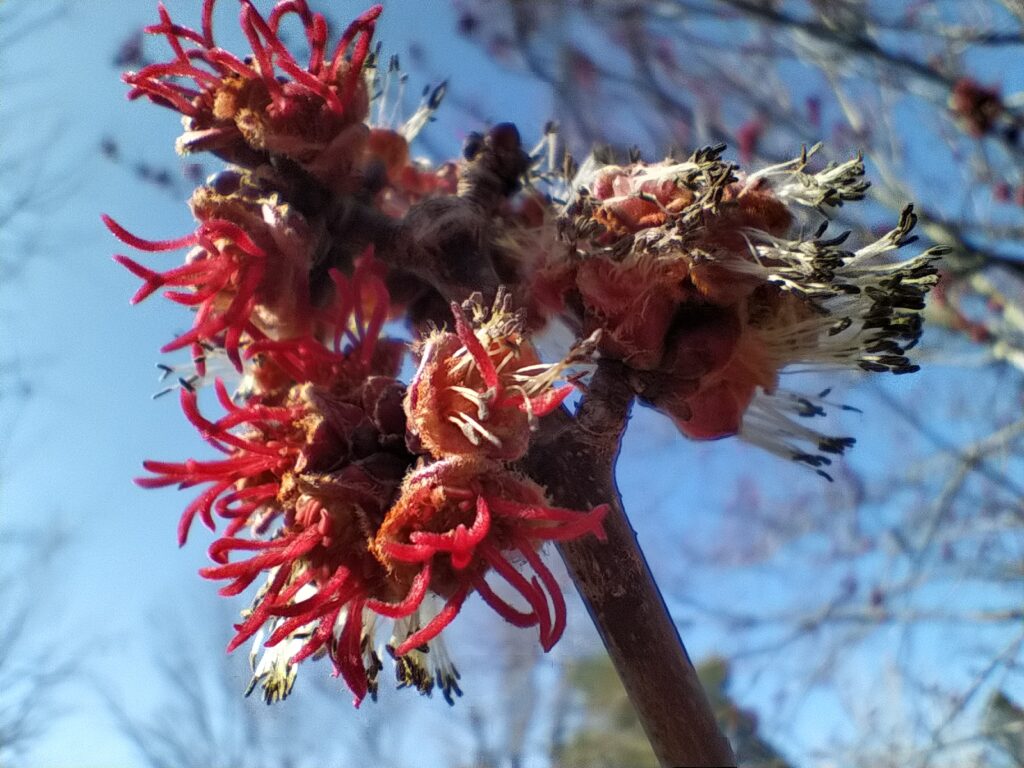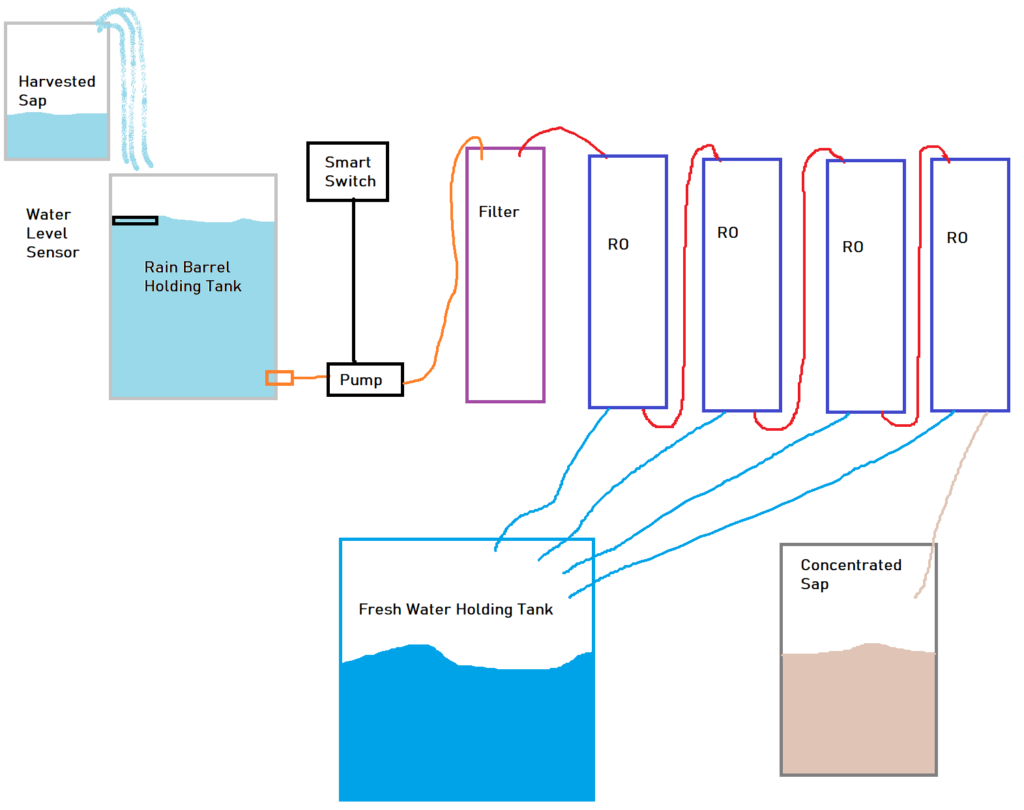We got fifteen full pints and a partial pint (plus a cup that Scott took out to enjoy early) of late-season maple syrup in our third batch. That gives us five and a half gallons of syrup this year — and we’ve got about eight more trees that we can tap next year.
Category: Maple Sugaring
Bud break
Maple Syrup Batch 2
Maple Syrup Batch 1
Maple Season Begins
DIY Reverse Osmosis Filter for Maple Sap
Notes from the reverse osmosis system build we are planning:
Ideally, we run RO inside — lose 3% efficiency on RO for every degree drop, and systems are rated at 77 F. Is this bad for sap storage, though?
Multiple RO membranes connected in series (“dirty” out goes to next one’s “in”, “clean” out goes to fresh water collection). 3x or 4x membrane — more concentrated as fluid runs through each of the membranes. Diminishing returns, 3-4 max units.
Process:
Sap goes into rain barrel — need valve out from rain barrel. Sensor in sap holding tank and smart outlet for pump — turn off pump when tank is near empty.
Pumped from rain barrel holding tank to filter. Output from filter to input on first RO.
“Fresh water” output from each RO goes to fresh water holding tank (rain barrel). “Dirty stuff” output from each RO goes to input on next RO for farther concentration.
“Dirty stuff” output from final RO, the concentrated sap, goes into Digiboil (65L, ~17 gallons of liquid)
Little pump we use for brewing draws from Digiboil to fill boil trays on the burners.
RO system:
Pump — need to compare this one and this $40 one.
Water filter housing Either with 1/4″ inputs or 3/8″ inputs — prefer 3/8″
Water filter 10″ long x 2.5″ across filters — these look like they’d fit
RO membrane & housing combo but we can get replacement things from Ali for about $10
Connections:
Something from rain barrel to 3/8″ input on pump — GHT female and 3/8″ male
Something from 3/8″ output on pump to 3/8″ input on filter
Something from 3/8″ output on filter to 1/4″ input on RO
3/8″ tubing from rain barrel to pump, from pump to filter, and from filter to RO
1/4″ tubing to run between RO filters
1/4″ tubing from each RO to fresh water holding tank
1/4″ tubing from last RO to Digiboil
2020 Maple Syrup
Our taps are drying up — some of them were drilled on 03 February. The weather is getting warm; a few trees have leafed out. Our maple season is coming to a close. We’ve got more than five gallons of maple syrup canned:
18 Feb 2020 — 1st batch — ~3/4 gallon, a little scorched and used for cooking instead of canned
25 Feb 2020 — 2nd batch — 6 pints
10 Mar 2020 — 3rd batch — 24 pints
26 Mar 2020 — 4th batch — 10 pints
04 April 2020 — 5th batch — 2.75 pints
Maple Sap Season Coming To A Close
We’re getting to the end of maple sap season – collecting a last batch of sap and boiling this week. We should get another gallon or so of syrup, but the red maples are well into leafing out. I’ve heard a lot of descriptions of the sap flavour after bud-break … to me, it is tannin heavy. That would put us around four gallons of syrup for the year — and re-enforce my belief that the algorithm determined tapping date is when we should tap – even if that’s the second week of January!
Stages Of Maple Sap
I was surprised to find out people think maple sap is yellow. I never really thought about it, but I happened to see “maple water” for sale at a market. Clear liquid in a clear glass bottle. The ingredients were 100% maple sap … so I knew it was clear before I’d even thought to wonder. I’ve seen sap with a slightly yellow tint. We pull the taps as the tree leaves begin to bud, so it is possible the sap yellows more throughout the year. But maple sap is clear.
As it is boiled, the sap begins to caramelize. Caramelization is what gives maple syrup a golden brown color – darker syrup is formed from sap harvested later in the year. Lighter syrup is from sap harvested earlier in the year.
As the sap boils down, the color will get darker and the flavor will get sweeter and, well, maple-ier.
Maple Sugaring Season – Boiling Again
We got thirty five gallons of sap from the back woods – combined with the forty two gallons from the front and side property … we have 77 gallons of sap to boil. And more coming!








